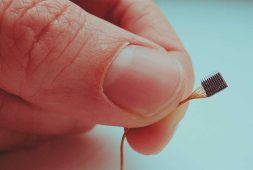
For men who suffer from an enlarged prostate, they may feel the frequent urge to urinate. Or, it could also be difficult for them to do so. It’s always best to talk to a doctor for treatment options. However, a new treatment could be around and this was designed to block blood flow to the prostate. This is what they call prostate artery embolization, and it can significantly reduce urinary symptoms. This was what a preliminary study saw.
Almost every man will experience enlargement of their prostate gland when they age. This problem is often referred to as benign prostatic hyperplasia (BPH). This is not a form of cancer and it doesn’t raise the risks for it. However, an enlarged prostate can give them the urge to urinate often and it may also lead to difficulties urinating or fully emptying their bladder. That’s because the swollen gland could block urine flow in the urethra. Then, there will be some that could also experience incontinence, or the inability to control their urine. As for others, they may also experience sexual dysfunction.
In order to reduce the symptoms they feel, doctors could prescribe them with alpha-blockers, medications that relax the muscles of the prostate and bladder. For those who experience a more severe case, minor surgery could be required.
There are researchers who have been looking into less-invasive options instead of major surgeries, and they have seen some success with their research. A preliminary study presented today at the Society of Interventional Radiology Annual Scientific Meeting in Phoenix, Arizona, saw that there may be a relatively new procedure that’s called prostate artery embolization (PAE). This has the ability to offer a long-lasting alternative for those who don’t want to go for surgery. This embolization requires the injection of microparticles that are made out of an acrylic polymer via a catheter. This will go into the prostate arteries and block blood supply to the gland. It’s set to lessen the swelling.
“The symptom improvement in our experience is very similar to invasive surgical procedures,” said senior researcher Shivank Bhatia, MD. He is the chair of interventional radiology at the University of Miami Miller School of Medicine. “We were surprised to see the long-term durability of the procedure and no adverse impact on erectile function in a majority of the patients,” he added.
For up to six years, Dr. Bhatia and team of colleagues monitored a total of 1,000 patients in North America who had gone through embolization. A press release stated that the participants reported significant sustained relief from the symptoms they experienced when urinating.
Before they had undergone with the procedure, these patients had a mean score of 23 out of possibly 35 points (considered “severe”) on a symptom rating system they made. Just less than three months after they sought treatment, that score went down to as low as 6 (considered “mild”). More importantly, the number was maintained during the six-year follow-up period.
Most patients will see around 25 to 40 percent reduction in the size of their prostate after the procedure, as per Bhatia.
Tiny Round Particles that Reduce the Blood Supply
For the procedure itself, this requires a specially trained interventional radiologist to insert a small catheter by making a tiny incision in the groin or wrist. He then guides the catheter to the prostate arteries through X-ray imaging. Once this is already in the right place, the medical team then injects the microparticles through it. These particles will travel through the bloodstream and only stops when these are in the blood vessels that supply the prostate gland. This is when the particles become lodged in the small blood vessels and are able to hinder blood flow to the prostate gland itself.
“The microparticles used in embolization are specifically designed to stick to the blood vessels and other particles — they do not move because they are designed to be permanent,” Bhatia said. “It is important that the particles do not move to other parts of the body, which could cause complications or unintended side effects.”
Embolization: A Relatively Fast Outpatient Procedure
Melodie Domurad, PhD ran early studies on prostate artery embolization. She is also currently the vice president of medical and regulatory affairs for the biotechnology firm Day Zero Diagnostics. She said that the procedure is a relatively fast one and the best part is that it’s an outpatient service that that does not require the patients to stay in the hospital.
“For the vast majority of men, the procedure takes about an hour and a half from start to finish,” Dr. Domurad said. It also must be noted that she was not part of the study. “Truly, you don’t need a stitch, and you leave with a Band-Aid over the area where the very thin tube is fed into the arteries.”
The other usual surgical treatments for enlarged prostates are considered to be more invasive. One of the most commonly used methods, as per a study published in the Journal of Urological Surgery, is called transurethral resection of the prostate. This is an operation that needs an insertion of an instrument called a resectoscope via the urethra in order for the doctor to cut out the obstructing prostate tissue. After this type of surgery, a patient must typically stay in the hospital up to two days, according to Mayo Clinic. This will also need a catheter to be inserted into the penis so that urine is carried out of the bladder.
This Established Procedure Is Not Yet Popular
Since 2017, when the U.S. Food and Drug Administration granted its approval to use these microspheres for prostate embolization, the procedure has been known to be safe and effective. However, the study found that a lot of men are not aware of this type of procedure that they could actually get.
“Men all over the U.S. can get this procedure, especially if they live close to a major medical center,” Bhatia said. “However, there are still areas where one may have to travel to faraway medical centers for the procedure. Hopefully, every American will soon have the option of this less invasive treatment.”
Domurad also said that more interventional radiologists will need to be trained for prostate embolization so that this could be readily available to more patients.
Bhatia wants men to know what their treatment options are and to talk to their doctors so that they can make an educated decision best for them in the end.
“Prostate artery embolization is a great alternative for the large number of seniors who need treatment for an enlarged prostate but are unable to undergo more invasive procedures due to various reasons,” he explained.



